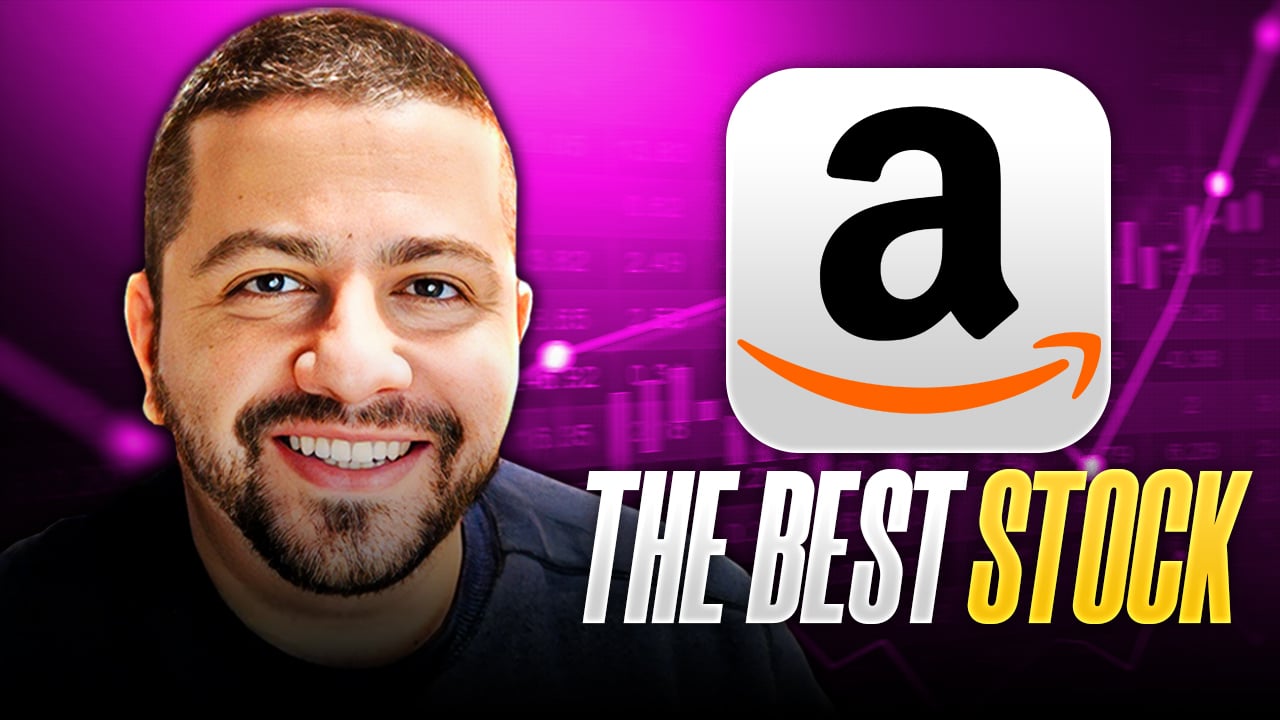Nine American companies are currently valued at $1 trillion or more, but only three of them graduated into the ultra-exclusive $3 trillion club:
- Microsoft (MSFT +0.33%): $3.4 trillion.
- Nvidia (NVDA +0.81%): $3.3 trillion.
- Apple (AAPL +0.34%): $3.1 trillion.
I think Amazon (AMZN +0.20%) could join them before the end of 2026. The tech conglomerate operates the world's largest e-commerce and cloud computing platforms, and it's quickly cementing itself as a leader in the artificial intelligence (AI) industry, which is becoming a key source of growth.
Amazon has a market capitalization of $2.2 trillion as of this writing, so investors who buy its stock today could earn a return of 36% over the next 18 months if it does join the $3 trillion club.

Image source: Amazon.
Amazon Web Services is becoming an AI powerhouse
Amazon Web Services (AWS) offers hundreds of cloud computing solutions to help businesses manage their digital operations, but it also became the engine of Amazon's AI strategy. AWS wants to dominate the three core layers of AI: hardware (data center infrastructure and chips), large language models (LLMs), and software (chatbots and other AI applications).
AWS builds centralized data centers and rents the computing capacity to AI developers for profit. It offers infrastructure fitted with Nvidia's industry-leading AI chips, but it also designed its own chips, which are substantially cheaper to use. In fact, Amazon CEO Andy Jassy says the new Trainium2 chip can save AI developers up to 40% on training costs compared to using competing chips.
AWS also created its own family of LLMs called Nova, which developers can use to accelerate their AI software projects. It includes the new NovaSonic speech-to-speech model, which paves the way for conversational (voice-powered) AI applications. But the AWS Bedrock platform also offers access to leading third-party models from companies like Anthropic and Meta Platforms, so developers have multiple options, which ensures they have no reason to visit competing cloud platforms.
Covering the third and final layer is an AI-powered virtual assistant called Q, which helps AWS customers analyze their internal data, and even develop software. Q has actually become the most capable AI coding assistant in the industry, maintaining the highest acceptance rate (fewest errors), and accelerating programming tasks by a whopping 80%.
AWS is the driving force behind Amazon's profits
AWS generated $29.2 billion in revenue during the first quarter of 2025, which was a 17% increase from the year-ago period. It represented less than one-fifth of Amazon's total revenue of $155.6 billion; however, the cloud platform was responsible for 63% of the entire organization's operating income of $18.4 billion.
Cloud and AI services carry very high profit margins, but Amazon's largest source of revenue is still e-commerce, which carries very low margins. Offering products at the cheapest possible price is a cornerstone of Amazon's e-commerce strategy, so it has never been highly profitable. However, its operating income improved over the past year as the company restructured its fulfillment network to make it more efficient, which continues to drive down its cost per order.
President Donald Trump's tariffs could undo some of that progress because Amazon and its third-party sellers will have to pass the added costs on to customers, or risk operating at a loss. According to Statista (citing Jungle Scout), more than 70% of the products sold on Amazon come from China, so they are currently subject to a 30% import tariff. The rate could come down after negotiations between the U.S. and China, but for now, it could be disruptive for Amazon's online sales.
That means AWS will be an even greater point of focus for Wall Street in the coming quarters because it's the biggest contributor to Amazon's earnings, and its success will largely determine the valuation of Amazon stock. Thankfully, demand for data center capacity continues to outstrip supply, which should keep profit margins elevated.
Plus, Jassy said AI revenue within AWS increased by a triple-digit percentage during Q1, and is now at a multibillion-dollar annual run rate, so it's likely to fuel the cloud platform's next phase of long-term growth.

NASDAQ: AMZN
Key Data Points
Amazon's (mathematical) path to the $3 trillion club
Amazon generated $1.59 in earnings per share (EPS) during the first quarter, which was an eye-popping 62% increase compared to the year-ago period. It takes the company's trailing-12-month EPS to $6.13, which places its stock at a price-to-earnings (P/E) ratio of 33.5.
That means Amazon is cheaper than both Nvidia and Microsoft, and just higher than Apple:
However, I would argue Amazon should be trading at a premium valuation right now. Its 62% EPS growth during Q1 crushed Apple's EPS growth of 8%, and Microsoft's growth of 18%. Plus, even Nvidia is forecast to grow its EPS by just 42% in its upcoming quarter, so Amazon's EPS might be increasing at a faster rate than every member of the $3 trillion club right now, which would normally translate into a higher P/E ratio.
The average P/E ratio between Nvidia, Microsoft, and Apple is 38. Let's assume for a moment that Amazon's P/E ratio rises to that level (it was there earlier this year, so it's not out of the question). Wall Street's consensus estimate (provided by Yahoo! Finance) suggests Amazon could generate $7.27 in EPS during 2026, so a P/E ratio of 38 would equal a share price of $276.26.
That would imply a market capitalization of around $2.95 trillion. But Amazon has beaten Wall Street's EPS estimates by an average of 22% over the last four quarters, so if that trend continues, the company's market cap would comfortably exceed $3 trillion by the end of next year.






